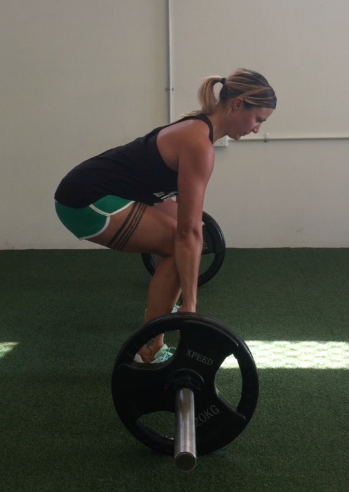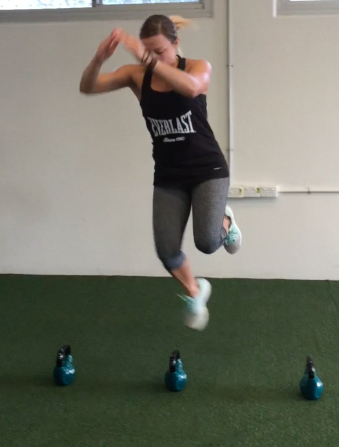Can female players train like male players?
This is a very common question that we get – whether the types of strength and power training that we talk about can be used by female players. The short answer is yes absolutely. However when we ask a little more specifically, ‘can and should female players train exactly the same as their male counterparts?’, the answer becomes not exactly the same. So then the answer to the question in the title is ‘yes…..sort of.’ But this answer isn’t very helpful, so lets expand on it.
There are 2 main schools of thought out there when it comes to females and physical activity, or more specifically when it comes to females and preparing via strength and conditioning for physical activity, or merely just strength and conditioning as an end in itself. There is one school of thought that believes that women are different to men and therefore must train completely different, and in some extreme cases shouldn’t even be doing strength and power related training at all. Then there is the other school of thought which lies down the opposite end of the spectrum, and believes that this is nonsense, and that despite some differences between the 2 genders, there is enough similarity for training to be exactly the same for women as men – especially when it comes to strength training, because strength training benefits everyone.
As with most things with 2 extremes, the truth, or the reality, lies somewhere in the middle.
‘For female athletes the most important component of training for both performance enhancement and injury prevention is strength training. That does not mean that female athletes should only strength train; rather, strength training is a factor that should always be present in the training program regardless of the time of the training year or the stage in a career.’
Vern Gambetta


So we have one extreme says that women are nothing like men and therefore should be trained completely differently, and the other extreme says that the structurally and functionally the 2 are close enough to be trained exactly the same. There are truths to both arguments, and as a result, there is not a black and white answer to this argument or question.
‘Because the muscle groups involved in a particular sport are obviously the same for men and women, resistence training programs should be designed to improve the muscles needed for successful sport performance, regardless of sex.’
Avery D Faigenbaum EdD
Age and Sex Related differences and their implications for resistance exercise
NSCA Essentials of Strength Training & conditioning – 3rd Edition
In short, structurally and functionally there are a lot of similarities, and by and large, training practices for the 2 can be very similar, however those anatomical and hormonal differences that do exist are enough to mean that there are some big considerations that need to be taken, which result in little tweaks as well as additions to a training program for a female, that wouldn’t exist – or at least wouldn’t exist to the same extent – in the program of a male in the equivalent sport.
‘Constructing a plan for female athletes requires special considerations. Males and females have definite biological differences in terms of strength and body composition.’
‘In program design, the gender of the athlete is important. Female athletes have different needs than male athletes, which will affect the training plan. Strength training is a more significant part of training for female athletes during all phases of the training year.’
Vern Gambetta
Some special considerations that will make a difference to the exact training specifics include;
- Hormonal cycles – particularly menstrual cycle
- Wider pelvis, and therefore a greater q-angle
- Postural issues around the pelvis, (resulting from things like pregnancy and footwear choices like high heels.)
- Stabiliser weakness and joint laxity (which are higher in females than males)
- A strength deficit or neuromuscular deficit, which does not exist in males
Some of these issues may only be minor or small, and indeed they will exist to varying degrees in different female players/athletes. However, together, they add up to quite some difference, and mean that special considerations need to be taken. As just one example of what these differences together can result in – ACL injury. ACL injury is far more prevalent in female athletes than in male counterparts of the same population (same sport, age, playing hours, etc.) This is just one example, and indeed special attention must be placed on training to prevent this type of injury occurring in female players.


But in short, can females squat and deadlift and press? Yes. Can they do powerful plyometric work? Yes, provided it is built up to appropriately (just as with the men.) Can they lift heavier amounts of weight? Yes, provided it is built up to appropriately, on top of a base of stability, good range of motion and good form. In fact, it is a strong belief of ours, that due to some of the extra challenges that female athletes face, both structural and hormonal, that strength training is likely even more important for female players than male players. This would surprise many people, as weights training is far more often looked at as a ‘mens thing.’
If you are interested in finding out more and what exactly to do about it - In Female Specific Strength & Power Training for Aussie Rules we expand on this reality in much more detail – and then give direction with where to go and what to do.
If you would like more detailed and personalised direction, checkout our personalised online programming, or if you would prefer even more personalised and detailed in-person coaching (for those lucky enough to live in the beautiful city of Adelaide), check out our Athletic Development Coaching and Junior Athletic Development Coaching.
Strength Coach

